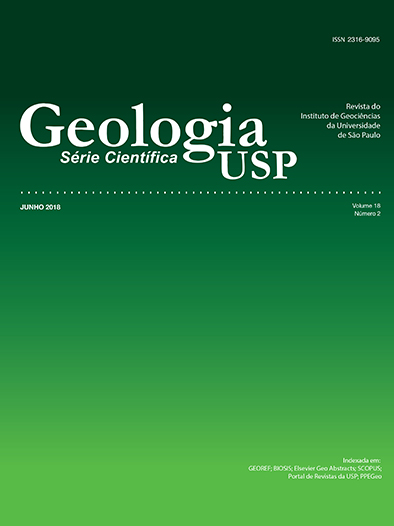Geoenvironmental mapping of the city of Casa Branca (SP), Brazil, as a subsidy to territorial planning
DOI:
https://doi.org/10.11606/issn.2316-9095.v18-133330Keywords:
Cross-thematic analysis, Physiographic subdivision, Geoenvironmental units, Environmental planning.Abstract
Even though geoenvironmental studies are recent, they are increasingly gaining importance as an environmental planning tool. At the beginning of the planning process, the planner compartmentalizes the given space, in order to better understand the parts that compose the environment. Then, he or she integrates each part to understand how they interact with each other in order to optimize them. The present project aims to develop geo-environmental zoning in the city of Casa Branca, São Paulo, Brazil at a scale of 1:50.000, considering physiographic, geological/geotechnical, and land use and occupancy criteria, including the location of Permanent Preservation Areas (PPAs). A cross-thematic analysis was the technique used for zoning. A series of thematic maps were drawn up and then subsequently crossed, either directly or in specific associations, until a final summary map was reached. The methodological steps of the zoning processes included: a physiographic subdivision of the area, the mapping of land cover and use, the location of the PPAs, fieldwork, and lastly, the integration of the information obtained. After executing all of the project stages, the map showing the geo-environmental units of the study area was obtained, from which interpretations were made about the potential and the limitations of the area, as well as recommendations. Overall, the aim of the study was to assist in planning and decisions regarding environmental issues in addition to providing a database for future environmental research in the area.
Downloads
Downloads
Published
Issue
Section
License
Authors who publish in this journal shall comply with the following terms:
- Authors keep their copyright and grant to Geologia USP: Série Científica the right of first publication, with the paper under the Creative Commons BY-NC-SA license (summary of the license: https://creativecommons.org/licenses/by-nc-sa/4.0 | full text of the license: https://creativecommons.org/licenses/by-nc-sa/4.0/legalcode) that allows the non-commercial sharing of the paper and granting the proper copyrights of the first publication in this journal.
- Authors are authorized to take additional contracts separately, for non-exclusive distribution of the version of the paper published in this journal (publish in institutional repository or as a book chapter), granting the proper copyrights of first publication in this journal.
- Authors are allowed and encouraged to publish and distribute their paper online (in institutional repositories or their personal page) at any point before or during the editorial process, since this can generate productive changes as well as increase the impact and citation of the published paper (See The effect of Open Access and downloads on citation impact).





